[9/2: Updated with split analysis & maps!] Big 4 minute wins with excellent competition in a tough long distance in Portugal shows that Thierry Gueorgiou (France) and Helena Jansson (Sweden) are well prepared for the 2016 season. Down to 6th place the gap was 8 and 13(!) minutes, respectively.
In the men’s class the Swedish National Team runners Albin Ridefeldt and Olle Boström were closest to Gueorgiou – more than 4 minutes behind.
Day 3 of Portugal O-Meeting was a long distance World Ranking event – and due to its World Ranking status the most important day of Portugal O-Meeting 2016.
Gueorgiou on top
– It was necessary to think twice before making a choice and this is very interesting in a Long Distance. It is this duality, both physical and technically, that we found often in the Portuguese terrains (Thierry Gueorgiou)
In the men’s class the Swedish National Team runners Albin Ridefeldt and Olle Boström were closest to Gueorgiou – more than 4 minutes behind. Another minute down were Swiss National Team runners Baptiste Rollier and Olli-Markus Taivainen. Jan Prochazka (Czech Republic) in 6th was nearly 8 minutes behind.
– Well, it is for this type of event, I keep going to Portugal in pre-season, Gueorgiou wrote in his training log after the race. – Another pretty extreme terrain, which is probably not too enjoyable at any other speed than competition speed.
Still Gueorgiou took the best out of the experience.
– Some experiences are really special like today. So, I enjoyed a lot and that’s what matters. The terrain was very difficult, very tricky, very demanding physically because of the climbing but also technically, asking for a good navigation between the rocks and the green.
Note also Gueorgiou’s rant about GPS-watches being forbidden in WRE-races in today’s training log. Time to allow GPS-watches in WRE-races?
Splits analysis Men
Thierry Gueorgiou won 3:54 minutes ahead of Albin Ridefelt with Olle Boström in 3rd at 4:02. Thierry Gueorgiou won 10 of 30 legs and lost 37 seconds or less to the leg winner on all legs – that was least of all runners in this race.
The biggest mistakes/time losses among the Top 15 where at the three first controls(see map below). Unfortunately no GPS-tracking available, so no details to be found.
Looking at the second leg is still interesting – also without GPS-data available. Gueorgiou ran down to the right here – you can easily lose a lot of time by trying something direct, and even left would lose you some time fighting your way up to the path (note that absolute lengths on the map below are not correct – length has not been calibrated):
Lot’s of grouping: Thierry Gueorgiou (1st) was in contact with Olle Boström (3rd) for 21 controls (3 controls behind). Albin Ridefelt (2nd) was in contact with Jonas Leandersson (7th) for 22 controls (3 controls behind). Baptiste Rollier (4th) was in contact with Jan Prochazka (6th) for 24 controls (6 controls behind). Olli-Markus Taivainen (5th) was in contact with Kubat Pavel (8th) for 22 controls (11 controls behind). Kubat Pavel (8th) was in contact with Andris Jubelis (11th) for 23 controls (1 controls behind).
Double Sweden: Jansson ahead of Billstam
In the women’s class, yesterday’s winner Annika Billstam was closest to Jansson – 4 minutes down. Another 5(!) minutes after Billstam followed Eva Jurenikova (Czech Republic), Anastasia Rudnaya and Svetlana Mironova (both Russia). Lina Strand (Sweden) in 6th was 13 minutes off Jansson.
I’m really happy. I did a good race. I had some trouble going to the first control, but then I took it easy. It was a really technical race and I kept focused all the way, Jansson said to the Portuguese Orienteering Blog after the race.
– I could run together with Annika and Eva and it was really nice. It was a good start field also today and I caught some other girls. It’s always nice to compete against the best and I’m happy for doing a good technical race.
Splits analysis women
Helena Jansson won 4:10 minutes ahead of Annika Billstam with Eva Jurenikova ([8737] Halden SK) in 3rd at 9:01. Helena Jansson won 6 of 23 legs and lost 35 seconds or less to the leg winner on all legs – that was least of all runners in this race. Marika Teini took the lead at the first control and stayed in front until control 2. Helena Jansson took over the lead at control 3 of 23 controls and kept it until the finish.
The fifth leg was troubling for many runners – quite tricky small detail on 1:15.000 scale:
Lot’s of grouping: Helena Jansson (1st) was in contact with Annika Billstam (2nd) for 16 controls (0 controls behind). Eva Jurenikova (3rd) was in contact with Annika Billstam (2nd) for 9 controls (6 controls behind). Anastasia Rudnaya (4th) was in contact with Annika Billstam (2nd) for 11 controls (4 controls behind).
Maps
Maps from today’s men and women elite:
POM Day 3 Long WRE WE

» See map in omaps.worldofo.com
POM Day 3 Long WRE MSE

» See map in omaps.worldofo.com
Results
Results Men SuperElite
| 1 | Thierry Gueorgiou | KR | FIN | 1:35:21 |
| 2 | Albin Ridefelt | OKL | SWE | 1:39:15 |
| 3 | Olle Boström | Järla | SWE | 1:39:23 |
| 4 | Baptiste Rollier | KR | FIN | 1:40:55 |
| 5 | Olli-Markus Taivainen | PelPo | FIN | 1:42:37 |
| 6 | Jan Prochazka | KR | FIN | 1:43:17 |
| 7 | Jonas Leandersson | SNO | SWE | 1:43:32 |
| 8 | Kubat Pavel | VaajTe | FIN | 1:44:42 |
| 9 | Arturs Paulins | Igtisa | LTU | 1:48:06 |
| 10 | Lucas Basset | JOG | FRA | 1:48:51 |
| 11 | Andris Jubelis | Igtisa | LTU | 1:48:58 |
| 11 | Kiril Nikolov | KR | FIN | 1:48:58 |
| 13 | Jarkko Huovila | Individual FIN | FIN | 1:49:23 |
| 14 | Bartosz Pawlak | WKS Grunwald PoznaD | POL | 1:50:00 |
| 15 | Hannu Airila | KR | FIN | 1:51:52 |
Results Women Elite
| 1 | Helena Jansson | OK Ravinen | SWE | 1:23:55 |
| 2 | Annika Billstam | OKL | SWE | 1:28:05 |
| 3 | Eva Jurenikova | Halden SK | NOR | 1:32:56 |
| 4 | Anastasia Rudnaya | MSP | FIN | 1:34:02 |
| 5 | Svetlana Mironova | Koovee | FIN | 1:35:28 |
| 6 | Lina Strand | GMOK | SWE | 1:37:16 |
| 7 | Marika Teini | Pohjantahti | FIN | 1:39:05 |
| 8 | Karoliina Sundberg | Lynx | FIN | 1:43:53 |
| 9 | Outi Hytönen | KangSK | FIN | 1:45:09 |
| 10 | Jessica Tullie | BASOC | GBR | 1:45:58 |
| 11 | Amélie CHATAING | KR | FIN | 1:46:01 |
| 12 | Kristin Löfgren | Varegg | NOR | 1:46:09 |
| 13 | Kine Gulliksen | BSK | NOR | 1:46:49 |
| 14 | Isia BASSET | JOG | FRA | 1:47:58 |
| 15 | Lone Karin Brochmann | BSK | NOR | 1:48:48 |
 World of O News
World of O News

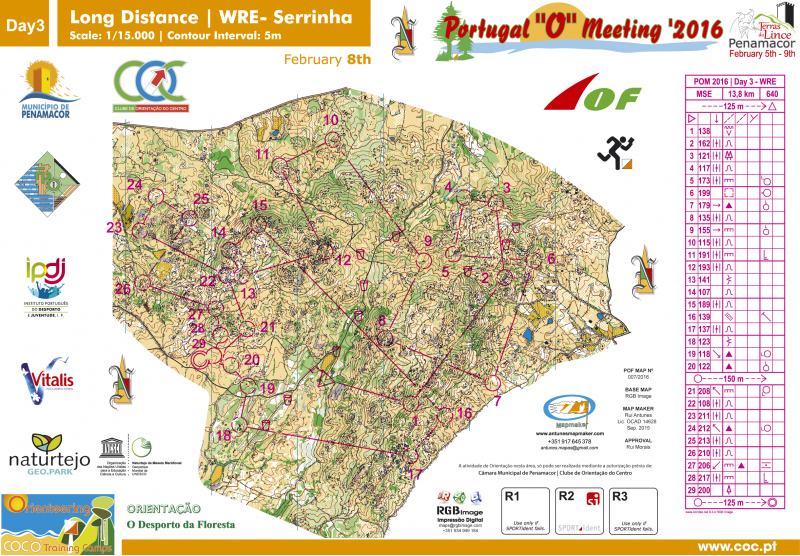
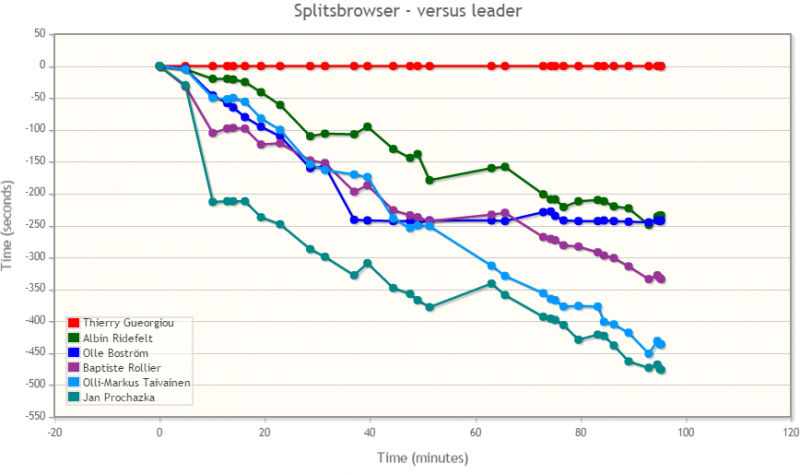
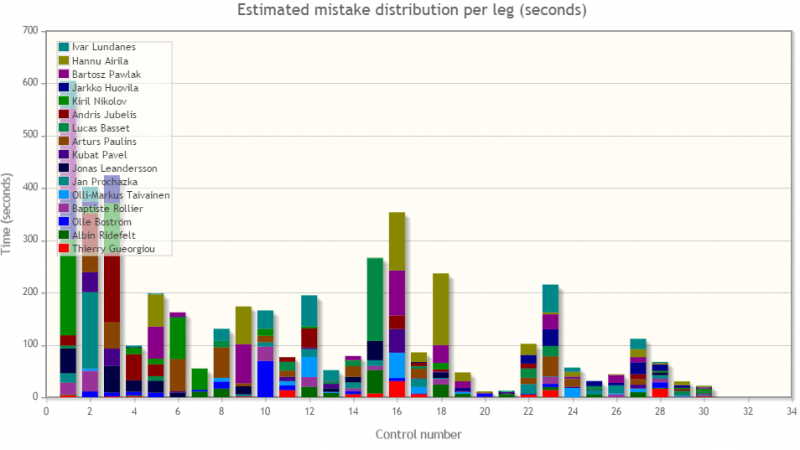
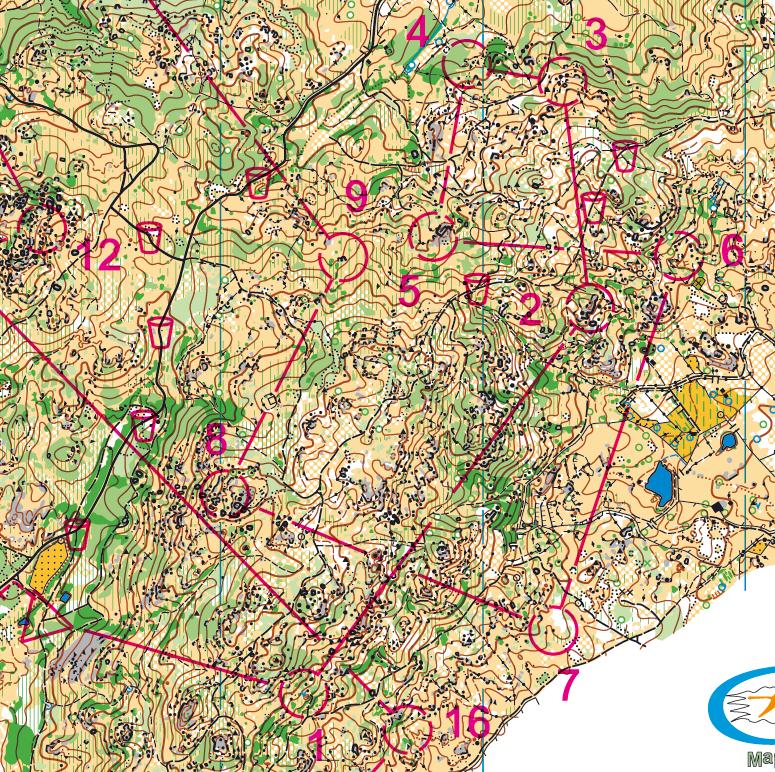
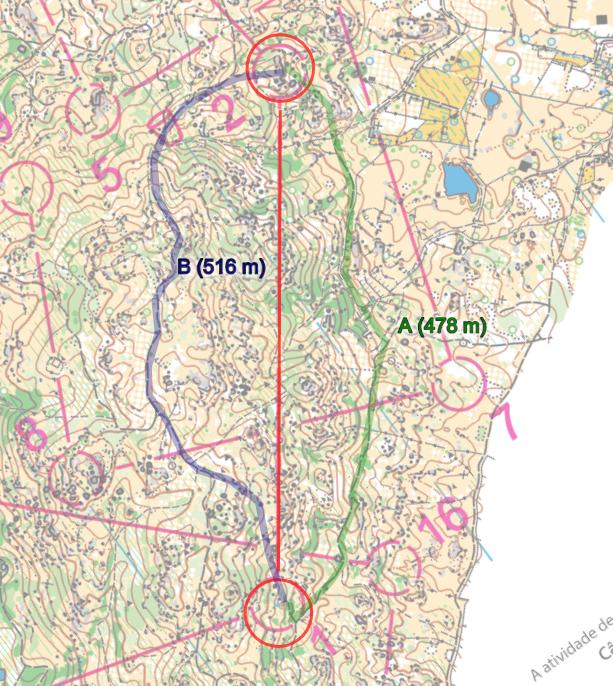
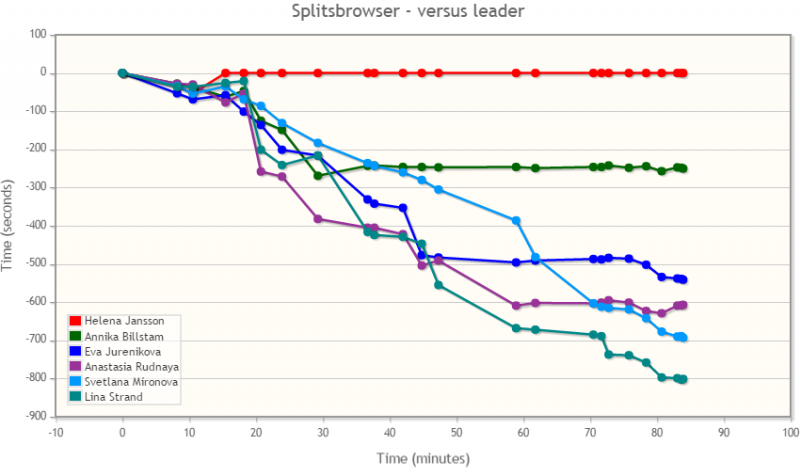
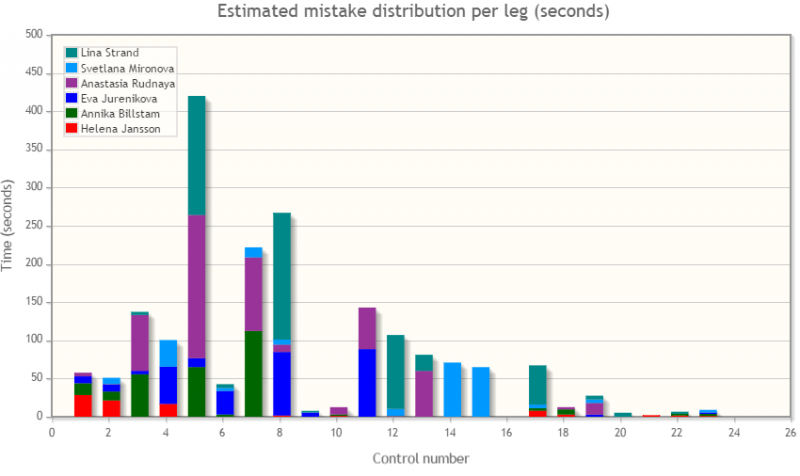

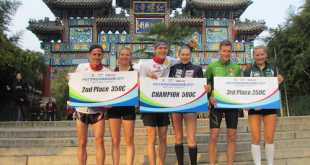
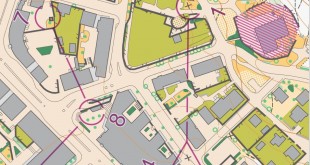
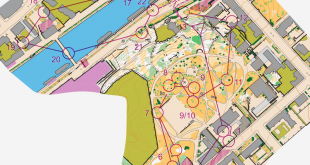
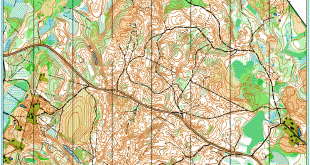
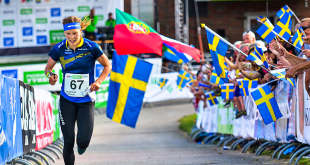
From time to time there are controls where using a GPS or an altimeter can help. I know that an altimeter was used in a World Cup race 2005 in Italy to find control number 3: https://dl.dropboxusercontent.com/u/14141358/2005wcitaly.jpg
Therefore I think the rule is good. Just use a device without display or put your GPS-watch in a vest on your back…
I’d change the rule to only be valid for World Cup & WOC races. For WRE, I think the old rule where you were not allowed to use the device but carry it was good enough.
BTW: If you put your GPS-watch in a west on your back you should be DSQ, not allowed according to the rules.I’d be more than happy enough if the rules were changed so that you would be allowed to carry your GPS-watch in a west on the back.
BTW2: Analog altimeter is (maybe) allowed to carry/use according to the rules, isn’t it? Depends if you define it as a navigational aid or not.
[Edited]
Being allowed to carry gear in a sealed manner would be sufficient, i.e. a pocket on your back, maybe wrapped in white tape and signed by a starting official. As long as you would have to spend significant time to retrieve it and open it without cutting the seal we would be OK.
If you really want to cheat then it is obviously possible to hide some other GPS gear on your body, but in a WRE class race with control guards and observers many places in the forest, as well as other competitors you would be discovered quite quickly.
BTW, re altimeters: At least here in Norway the general rules would disallow that: You can only use a (analog) compass in addition to the race map, no other special gear unless specifically allowed, i.e. headlamps.
21.3 During the competition the only navigational aids that competitors may use or carry are the map and control descriptions provided by the organiser, and a compass.
21.4 Competitors may not use or carry telecommunication equipment between entering
the pre-start area and reaching the finish in a race, unless the equipment is approved
by the organiser. GPS data loggers with no display or audible feedback can be used.
The organiser may require competitors to wear a tracking device.
Thus, depends on what you define as a navigational aid. So I guess you are allowed to carry the altimeter until you start using it as a navigational aid (because generally I wouldn’t define it as a navigational aid:)
I think altimeter is a navigational aid, because it certainly helps to navigate, especially in mountainous areas. I have used it, when hiking in mountains and trying to pinpoint my location more precisely.
But then glasses also aid navigation, if your eyesight is not good. So could binoculars in mountains. Magnifier glass also helps you to read map and navigate in detailed terrain.
Actually I do not understand why limit it to compass only? Yes, the gear should be affordable, but why is compass so saint and altimeter so wicked? If you are willing to mess with it, why not? It brings more variables into the game. The balance of what to take with you vs. going light. That said, I believe most runners wouldn’t find it useful, especially because there are few or none altitude numbers on the map. Yes, it could be sometimes used for relative altitude, but then you have to decide that you’ll need it from the point, where you know your position accurately. It doesn’t help much, when you are already lost. Maybe if altimeter is combined with compass, it can be more handy.
Several decades ago, when Swedish maps were significantly worse than today, the best approach on many long legs, like on “Långa Natten” in Tiomila, was to count steps for maybe 700 m, then stop and look for the control or some recognizable terrain features.
At this time somebody put a mechanical counter on the side of their compass, the intention was that you would click the switch once for every 100 double steps and thereby making it a bit easier to remember how far you had counted.
This counter was the cause of serious discussions about how it might be in violation of the “navigational aids” rule, and the determination was that a purely mechanical device like this was OK. The same rule would obviously also apply to a magnifier glass!